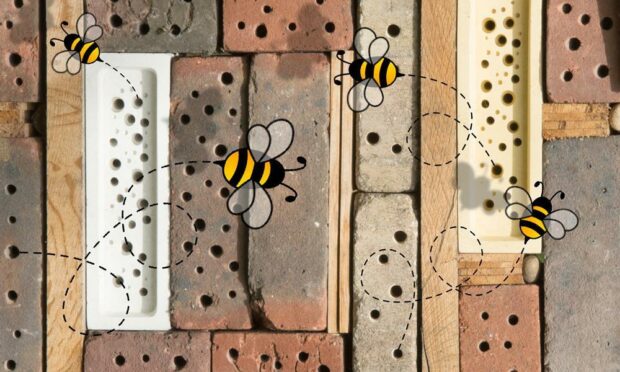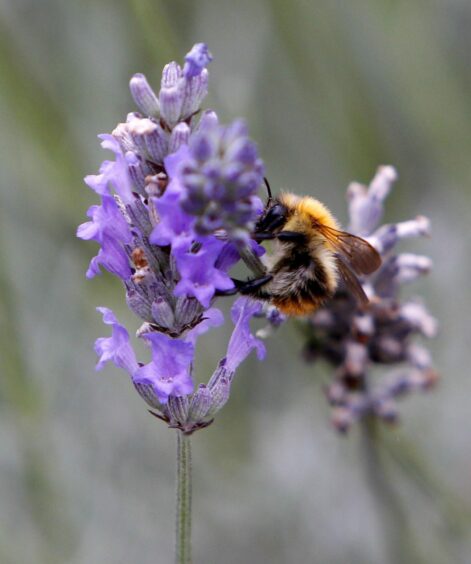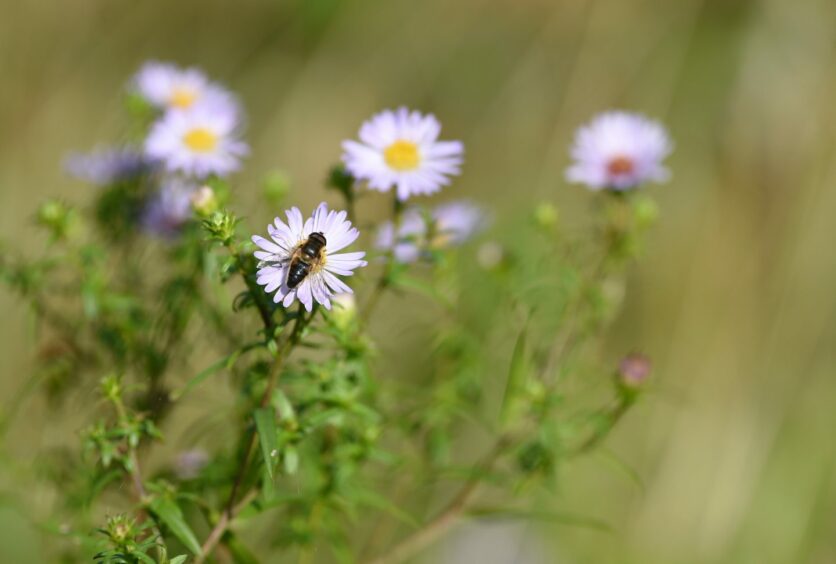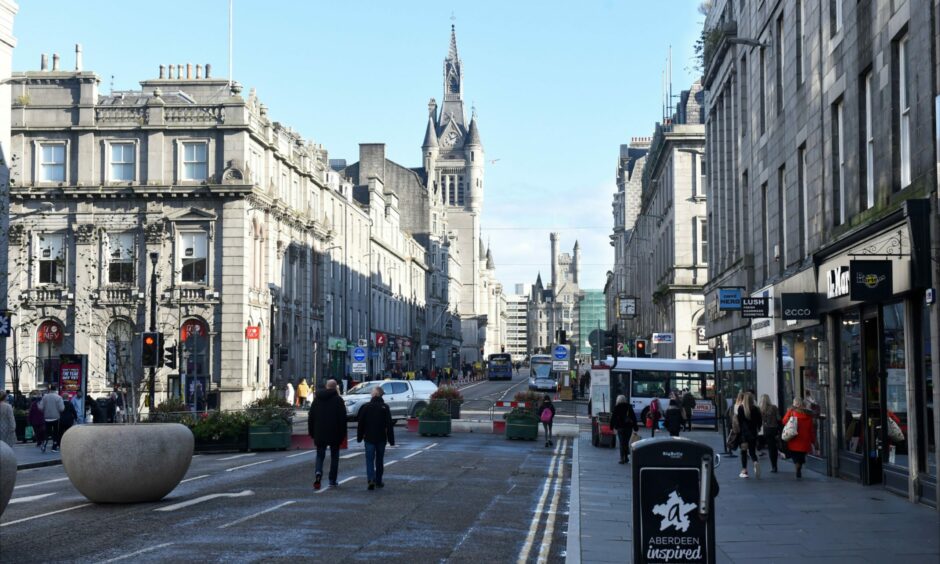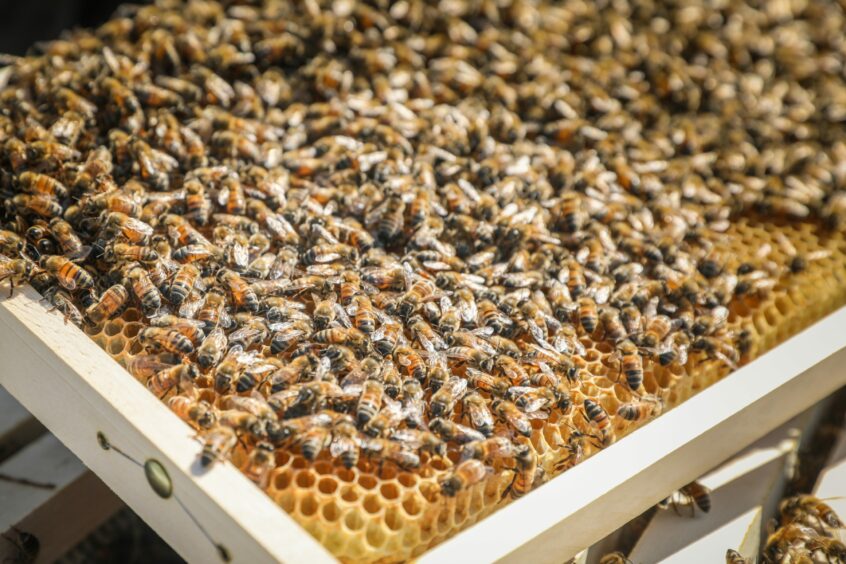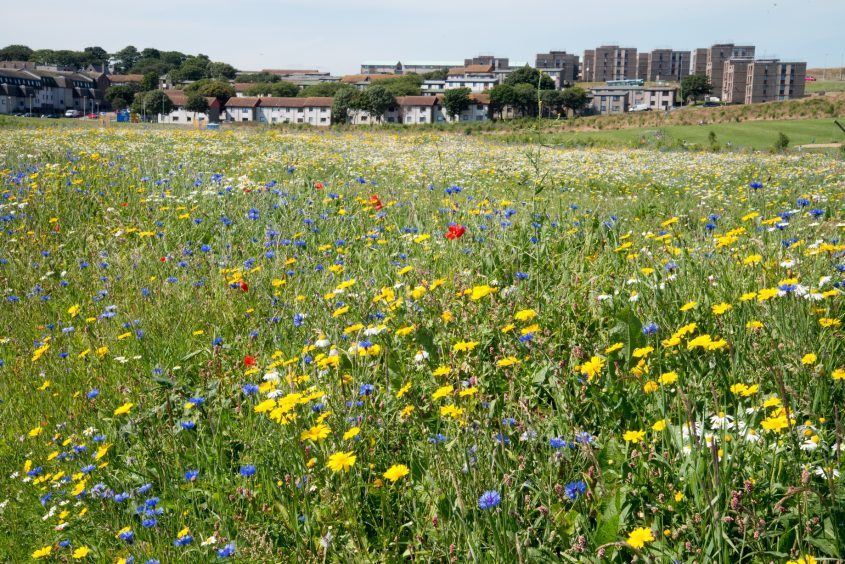They might look small and unassuming, but hole-riddled bee bricks have been creating quite the buzz among nature lovers and conservationists.
The bricks are designed to be used as a nesting and hibernating site for solitary bees, and can be incorporated in the place of standard bricks during construction.
In Brighton, they have been used in the creation of new buildings as part of plans to give nature a home, and help increase biodiversity.
A bee brick – now compulsory in Brighton & Hove on new buildings after I raised issue at Council. Big victory. pic.twitter.com/felFEB5FEH
— Cllr Robert Nemeth (@robert_nemeth) January 11, 2022
The council in the area has made it a requirement that all new buildings more than five metres high must include bee bricks on their external walls.
Pollinator species like bees are hugely important for both biodiversity and the food supply chain.
The Wildlife Trusts say 85-95% of the UK’s insect-pollinated crops rely on wild pollinators.
However, pollinators like bees have been in decline across the country.
So, are bee bricks part of the answer?
Or is there a sting in the tail of the initiative?
Around 270 species of bee in UK, but only some nest in stonework
Matthew Richardson, of the Scottish Beekeeper’s Association, is manager of Edinburgh University’s apiary at King’s Buildings campus.
He explained that although restoring nesting sites and habitat for Scotland’s pollinators “can be a good thing”, there are “a few caveats” that go along with schemes like bee bricks.
He said: “Bee bricks will only provide homes to certain types of insect.
“There are around 270 different types of bee in the UK, and thousands of other species of pollinators such as wasps, butterflies and moths.
“However, only a small portion of these will nest in masonry and stonework.
“Others nest underground, in earth banks, plant stems, or in cavities in trees.
“We need to look at preserving and restoring these other habitats, otherwise we run the risk of artificially promoting one group at the expense of another.”
Matthew said that as well as taking away places insects can nest, building work also “removes resources on which insects can forage”.
He explained that he does not want to sound pessimistic, and is happy that environmental issues like pollinator numbers are being discussed, and solutions are being put forward.
He added: “However, this is just one of a myriad of approaches that should be investigated, and there is always a risk that this ‘ticks the box’ of supporting pollinators, without in reality making a significant difference”.
‘An easy win for biodiversity’
Alison Stuart, the director of Aberdeen Climate Action, acknowledged the potential problems but said she would welcome bee bricks being installed in buildings in Aberdeen.
Alison Stuart said: “It would be an easy win for biodiversity, and doesn’t really cost much.
“As well as swift boxes, it would be a really good idea to put these in all new builds in order to increase the biodiversity we have in this part of the world.
“Particularly in a country like the UK which is quite barren of diversity in nature, we need to be doing everything we can to keep promoting and encouraging biodiversity.
“All pollinators are extremely important for our food security.”
Bee brick potential raised with Aberdeen City Council staff
And Aberdeen City Lib Dem councillor Ian Yuill says he has raised the potential for a bee brick project in the Granite City with local authority staff.
He added: “It strikes me as an interesting idea, anything which helps the wild bee population is good for the environment and we should be encouraging it.
“I’m waiting to see what Aberdeen City’s planning staff think of it. ”
Inverness beekeepers swarming up to the idea
Barbara Sandbach, the secretary of the Inverness-shire Beekeeper’s Association, said she thinks bee bricks could be beneficial to nature, but questioned whether or not they should be mandatory for new buildings.
She said: “The bee bricks could encourage or provide a home or nesting area for certain solitary bees and insects.
“These would be native species which do certainly suffer from a lack of habitat, so any method of helping them is to be encouraged.
“On those grounds, I’d say that bee bricks would be a good idea, but it is debatable whether it should be a preference, rather than mandated.”
Want to help bees right now? Plant the right plants, says north-east beekeepers
A spokesperson for the Aberdeen and District Beekeeper’s association said the “jury is out about the benefits of such bricks”.
They pointed to criticism in the Guardian of the Brighton bee brick project by scientists who raised concerns that the bricks could have a detrimental impact on bees.
It has been argued by some researchers that if the bricks aren’t cleaned effectively, they could attract mites and cause disease to spread.
However, other scientists have said the bees will deal just fine with bricks that aren’t cleaned as they can assess if a particular hole in a brick is suitable or not.
The Aberdeen and District Beekeeper’s association spokesperson said before they would like to see bee bricks used widely, the impact of Brighton’s project should be studied properly first.
They explained that there is already a successful, and easy, method of helping bees available to everyone right now: “The best advice is for everybody to plant bee-friendly flowers, shrubs, and trees, and to leave the dandelions to flower in the lawn.”
You may also like:
- How you can help protect Deeside’s vital capercaillie population
- Storm Frank devastation creates new habitats for struggling birdlife
